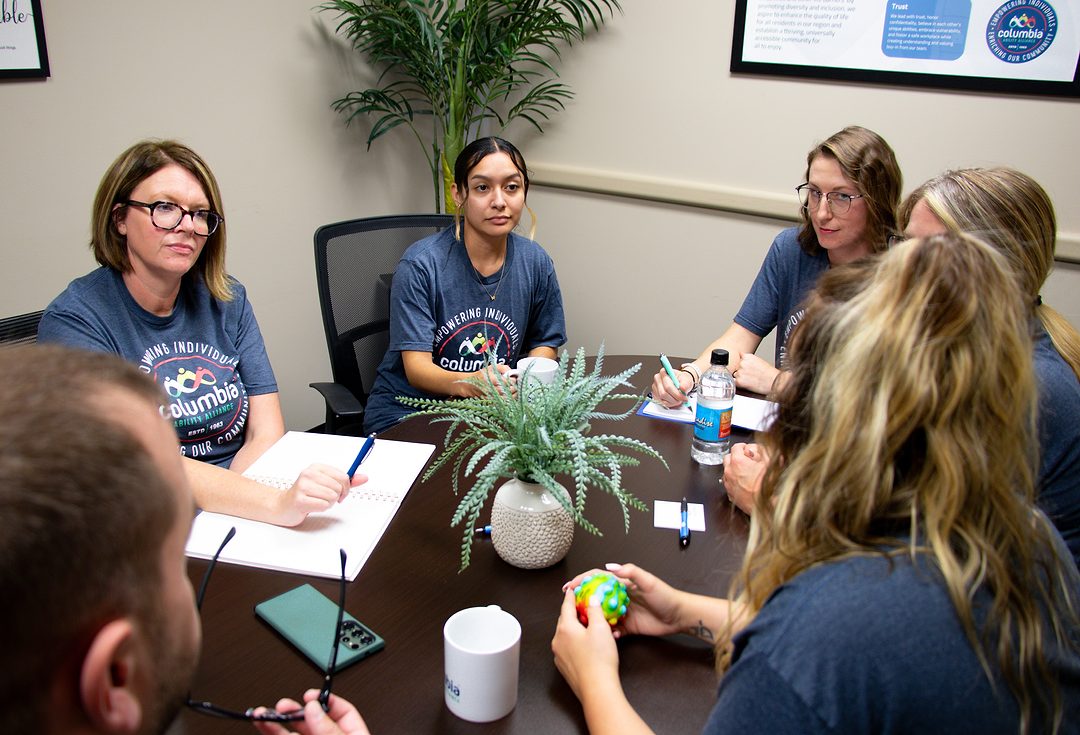
Home » How to foster a more inclusive workplace
Access to good jobs for all
How to foster a more inclusive workplace

October 14, 2024
By Cheri Montee, director of HR, Columbia Ability Alliance
By Michael Novakovich, president & CEO, Columbia Ability Alliance
October is National Disability Employment Awareness Month, a time to celebrate the unique abilities and benefits individuals with disabilities possess and provide to workplaces. Individuals with disabilities want to belong just like everyone else. And like everyone else, each person has something special to offer if given the chance. The theme of this year’s awareness month is “Access to good jobs for all.”
“Diversity is inevitable now, so creating a culture of inclusion becomes the greater-and more crucial-challenge for all of us.” – Jonny C. Taylor Jr., SHRM-SCP

Cheri Montee
The “melting pot” is a term many of us heard growing up in reference to living in the United States. It describes a place where people from different backgrounds come together and adopt a culture that is different from their home country. Taylor went on to say that inclusion operates as a functional arm of diversity. October being National Disability Awareness Month makes it a great time to talk about how to foster a more inclusive workplace.
Inclusion is the practice of providing equitable access to opportunities and resources for people who might otherwise be excluded or marginalized, such as those who have a disability or are members of a minority group. It creates an environment where everyone feels respected and valued, regardless of their background or identity.
Inclusion is the right thing to do, but businesses may face many challenges along the way. Workforce resistance, cultural misunderstandings, lack of ongoing training and implicit bias to name a few. Like many winning strategies, building an inclusive workplace will stretch us and strengthen us if we are united in our purpose.

Michael Novakovich
Businesses that invest in this space through training, education, and ongoing communication will see returns in the form of improved employee morale, increased productivity, higher retention rates, enhanced recruitment efforts, and greater customer satisfaction.
There are several steps organizations can take to enhance accessibility and create an inclusive workplace. With a lens for embracing the disabilities community, consider the following.
Open your organization’s doors to provide employment opportunities for individuals with disabilities. The unexpected impacts are sure to surprise and delight your team and customers.
Create opportunities for individuals with disabilities within your organization to provide input on different business endeavors. Their unique input may be the catalyst for creativity and innovation your business has been searching for.
Include individuals with disabilities in your promotional endeavors, not as a token display but to showcase the diversity of people employed by your business and those served by your company. Everyone wants to belong, and being represented in marketing and promotional endeavors can be empowering for anyone, including individuals with disabilities.
You may need to review your recruiting processes to discern if you are creating artificial barriers for individuals with disabilities or if adjustments can be made to increase accessibility. Consider this: Major corporations, including Ford Motor Company, Microsoft, Hewlett Packard (HP), and SAP, have created neurodiversity hiring programs to advance accessibility and enjoy the benefits neurodiverse individuals provide to these businesses. These organizations are reporting significant productivity gains from their neurodiverse employees, which also provide organization-wide impacts.
Best practices for successfully hiring neurodiverse individuals may include auditing and editing job descriptions to ensure inclusive language and to remove generic or unnecessary requirements; consider holding virtual interviews, rather than in person, to create comfort for the neurodiverse candidate who may perform better in this environment; and employee training on best practices for interacting with neurodiverse individuals.
A combination of these practices and others, such as accessibility tools on company websites, may aid in the hiring of often overlooked talent from individuals with intellectual disabilities, developmental disabilities, or physical disabilities as well.
There is a wealth of online resources and community partners, such as Columbia Ability Alliance, Responding to Autism, Spectrum Studios, and others, that can help guide businesses in developing inclusive hiring practices.
Providing employment opportunities for individuals with disabilities has a profound impact on their lives and meaningfully impacts organizational culture, recruitment and retention endeavors, customer satisfaction, and organizational outcomes. Ultimately, it advances inclusion, which aids in building a better community for all to enjoy.
Cheri Montee is director of HR at Columbia Ability Alliance. Michael Novakovich is president & CEO of Columbia Ability Alliance
Charitable Giving & Nonprofits Labor & Employment Nonprofits Opinion
KEYWORDS October 2024
Related Articles
Related Products





